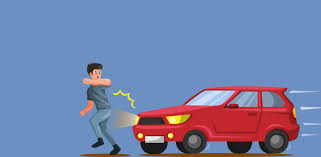Motor vehicle Laws Netherlands
In the Netherlands, motor vehicle laws are governed by several laws and regulations, primarily the Road Traffic Act (Wegenverkeerswet 1994) and the Regulation on Driver's Licenses (Regeling Rijbewijzen). The rules are enforced by the Dutch Road Traffic Agency (RDW) and Dutch Traffic Police. Here are the key points of the motor vehicle laws in the Netherlands:
1. Vehicle Registration and Licensing
- Vehicle Registration: All motor vehicles (cars, motorcycles, trucks, etc.) must be registered with the RDW. After registering, vehicles are issued a license plate. The registration process includes paying an annual road tax (motorrijtuigenbelasting), based on the vehicle’s weight, emissions, and type.
- Vehicle Inspection: Vehicles are required to undergo an APK (Algemene Periodieke Keuring) inspection, which is similar to a MOT test in other countries, to ensure the vehicle’s safety, emissions, and roadworthiness. For most vehicles, this inspection must be done every 1 to 2 years after the car is three years old.
- Insurance: It is mandatory for all motor vehicles to have at least third-party liability insurance, which covers damage caused to others. Comprehensive insurance (including damage to your own vehicle) is optional but recommended.
2. Driver’s License
- Eligibility: To obtain a Dutch driver’s license, applicants must be at least 18 years old. The minimum age for obtaining a motorcycle license is 20 years.
- Driver’s License Types: The Netherlands issues different types of driver's licenses depending on the vehicle:
- Category B: For cars (up to 3500 kg).
- Category A: For motorcycles.
- Category C, D, E: For larger vehicles (trucks, buses, etc.).
- Learning and Testing: New drivers must pass both a theoretical and a practical driving test to obtain a full license. The theoretical exam covers traffic laws, road signs, and basic vehicle knowledge.
- International Licenses: Citizens of EU/EEA countries can use their valid driver’s licenses in the Netherlands, while non-EU residents may need to exchange their foreign licenses or pass a driving test.
3. Traffic Rules and Regulations
- Speed Limits:
- Urban Areas: 50 km/h (30 km/h in certain residential areas).
- Outside Urban Areas: 80 km/h.
- Highways (Motorways): 100 km/h (or 120 km/h on some highways).
- There are stricter limits in certain zones, such as near schools, construction zones, or busy pedestrian areas.
- Right of Way: Vehicles must follow the right of way rules, including at intersections and roundabouts. Cyclists and pedestrians often have the right of way, especially at crosswalks and bike paths.
- Drunk Driving: The legal blood alcohol limit for drivers is 0.5 grams per deciliter (0.2 for novice drivers). Exceeding this limit can result in fines, license suspension, or imprisonment.
- Seatbelts: Wearing seatbelts is mandatory for all passengers, including those in the back seat. Child safety seats are required for children up to 1.35 meters in height.
- Mobile Phones: It is illegal to use a mobile phone while driving unless you have a hands-free system. Violating this law can result in fines.
4. Motorcycle and Bicycle Regulations
- Motorcycle Helmets: It is mandatory for motorcyclists and their passengers to wear helmets.
- Bicycles: The Netherlands is a bike-friendly country, and cyclists must adhere to specific rules, such as using lights at night and following traffic signals. Cyclists must also use designated bike lanes when available.
5. Traffic Violations and Penalties
- Speeding Fines: Speeding fines are based on how much the speed limit is exceeded. They can range from minor fines for small infractions to significant penalties for excessive speeding.
- Parking Violations: Parking illegally, such as in disabled spots or blocking driveways, can result in fines or the vehicle being towed.
- Point System: The Netherlands uses a penalty point system for traffic violations, where a certain number of points can lead to a suspended or revoked license.
- Fines: Fines for violations can be paid through online portals or directly to authorities. Serious offenses, such as driving under the influence, can result in arrest or a court appearance.
6. Road Safety and Public Awareness
- Road Safety Campaigns: The Dutch government frequently runs campaigns to raise awareness about road safety, including safe driving, seatbelt use, and cycling safety.
- Alcohol and Drugs Testing: Police conduct random roadside alcohol and drug tests, especially at night and during high-traffic hours.
7. Vehicle and Environmental Standards
- Emission Standards: The Netherlands adheres to strict EU regulations on vehicle emissions to reduce air pollution. Vehicles must meet Euro 6 standards or higher, and older vehicles may be restricted in certain areas or required to undergo additional testing.
- Low Emission Zones: Certain urban areas have designated low-emission zones (LEZ), where vehicles that do not meet the required emissions standards are restricted.
8. Public Transport
- Public Transport Regulations: Public transportation in the Netherlands is regulated by national and local authorities, and tickets must be purchased in advance or via mobile apps.
- Bus and Tram Lanes: These are reserved for buses, trams, and bicycles. Unauthorized vehicles can be fined for using these lanes.
9. Traffic Accident Reporting
- Accidents: Drivers are required to report traffic accidents, especially if there is injury or significant damage. Police may also be called to the scene if there is a dispute or if damage exceeds a certain amount.
These laws ensure safe, efficient, and environmentally responsible road use. The Dutch government and local municipalities work to continuously improve road safety through regulation, enforcement, and public awareness.




{!! (isset($postDetail['review_mapping']) && count($postDetail['review_mapping']) > 0 ? count($postDetail['review_mapping']) : 0) }} comments